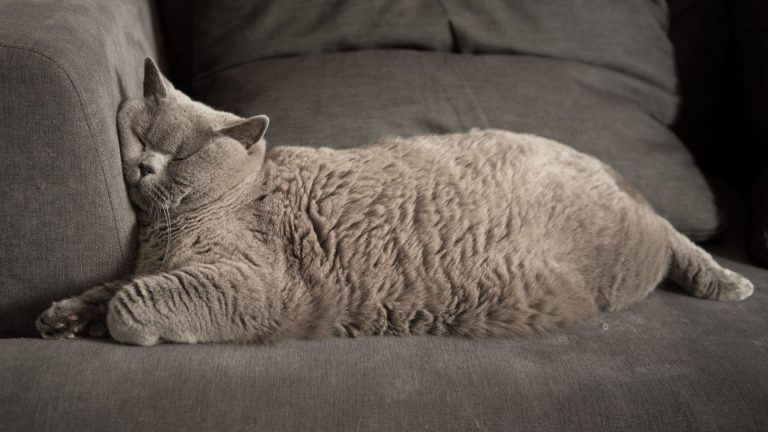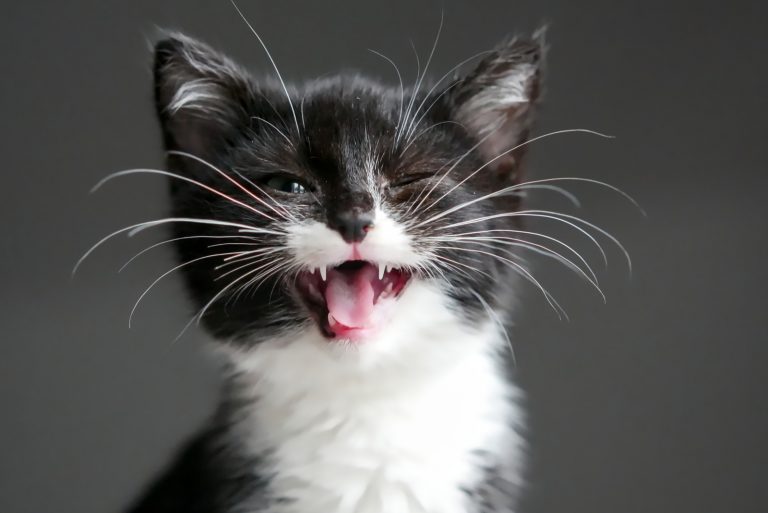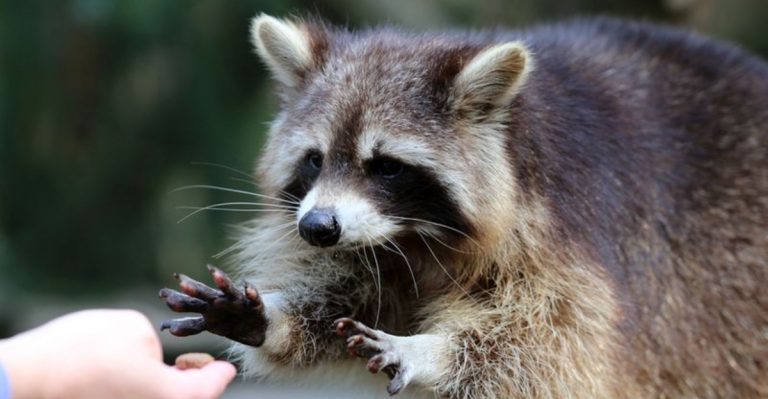My Cat Is So Skinny I Can Feel Her Bones – What Should I Do?
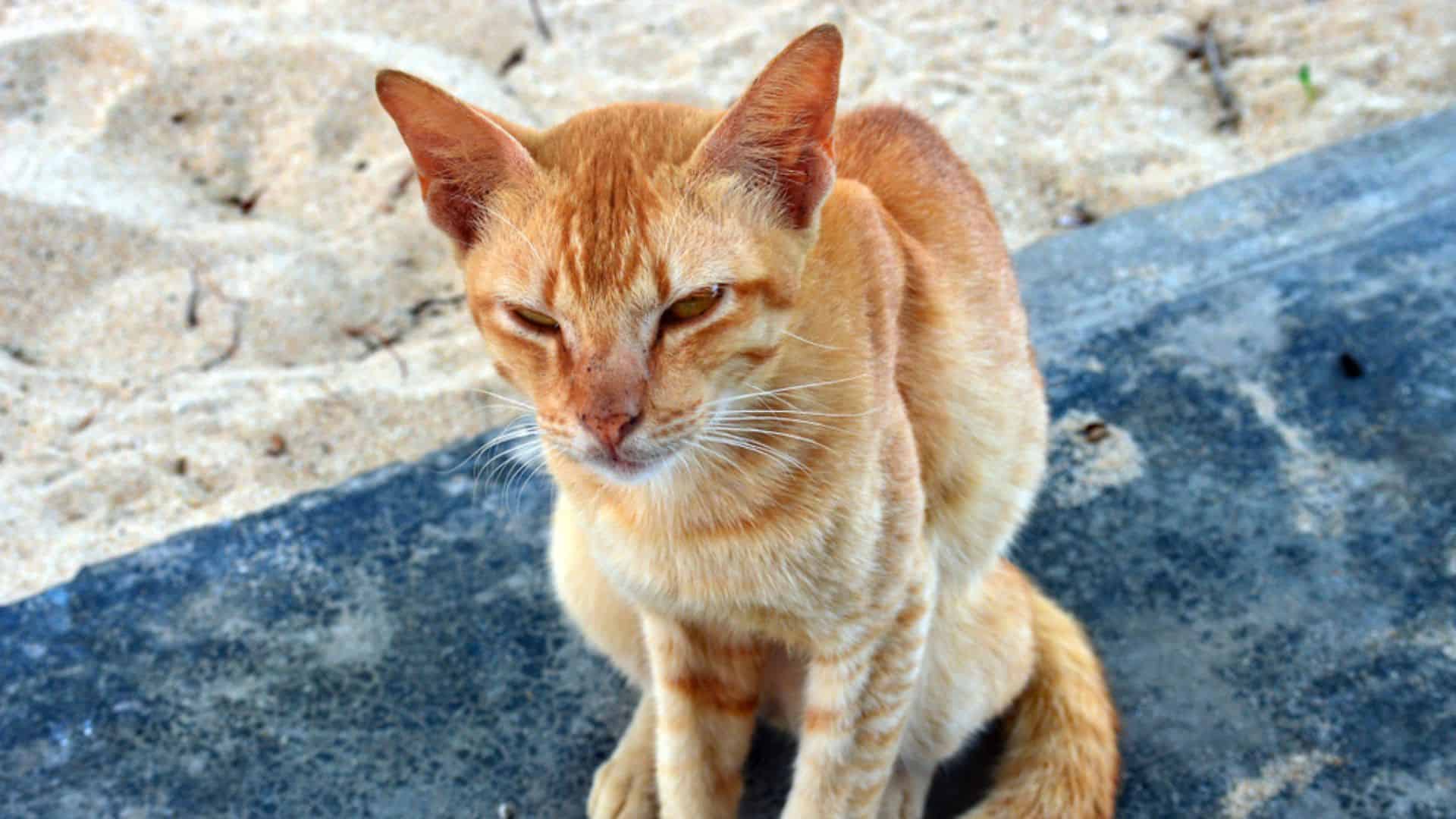
You’re stroking your cat while she’s cuddled up in your lap, and it’s the best feeling ever! But then you notice you can easily feel your cat’s bones.
You might be slightly worried: My cat is so skinny I can feel her bones, is this normal?
In this article, I will go over how you can distinguish if your cat is underweight; and if so, what steps you need to take to ensure your kitty’s weight is back where it needs to be!
My Cat Is So Skinny I Can Feel Her Bones
If you’re worried about your cat’s weight, there are two things you need to do:
• determine if your cat is underweight or not
• if your cat is underweight, you need to dedicate some time to solving this issue, as weight loss is usually an indicator of an underlying health issue
How Do I Know If My Cat’s Underweight Or Not?
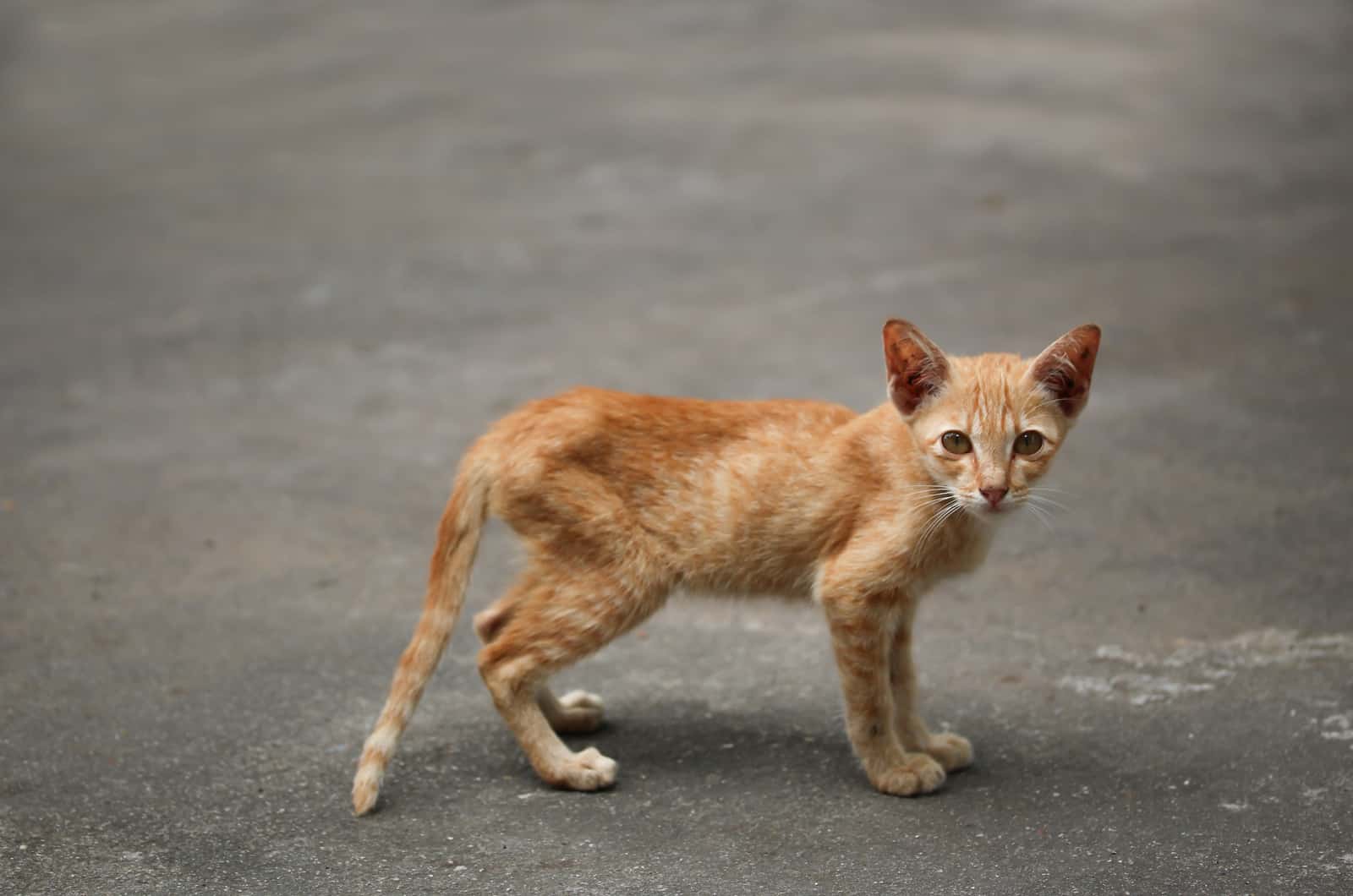
When you pet your cat, it’s completely normal to feel their bones – shoulder blades, spine, ribs, and hip bone.
You can feel your own ribs, but you’re most likely not underweight as long as they’re not sticking out. The same goes for cats: even if you can feel your cat’s ribs, it doesn’t necessarily mean the cat’s underweight.
A general rule of thumb is: If you can feel your cat’s bones, but they’re not visible – your cat is not underweight.
On the other hand, if your cat is really bony to touch, and its ribs, spine, and hip bones are easily observable, then your cat is underweight.
Another way to check your cat’s underweight is by measuring the cat’s weight.
You most likely know your cat’s normal weight range, so if your cat weighs less than usual, that’s a sign something might be going on with your cat’s health.
To learn more about a healthy weight for cats, I suggest reading: How Heavy Should My Cat Be: Weight Guide
6 Potential Reasons Your Cat Is Underweight
The reason behind a cat losing weight and subsequently becoming underweight is not eating (enough). But, why is your cat not eating enough? Let’s find out.
1. Your Cat Is Getting Older
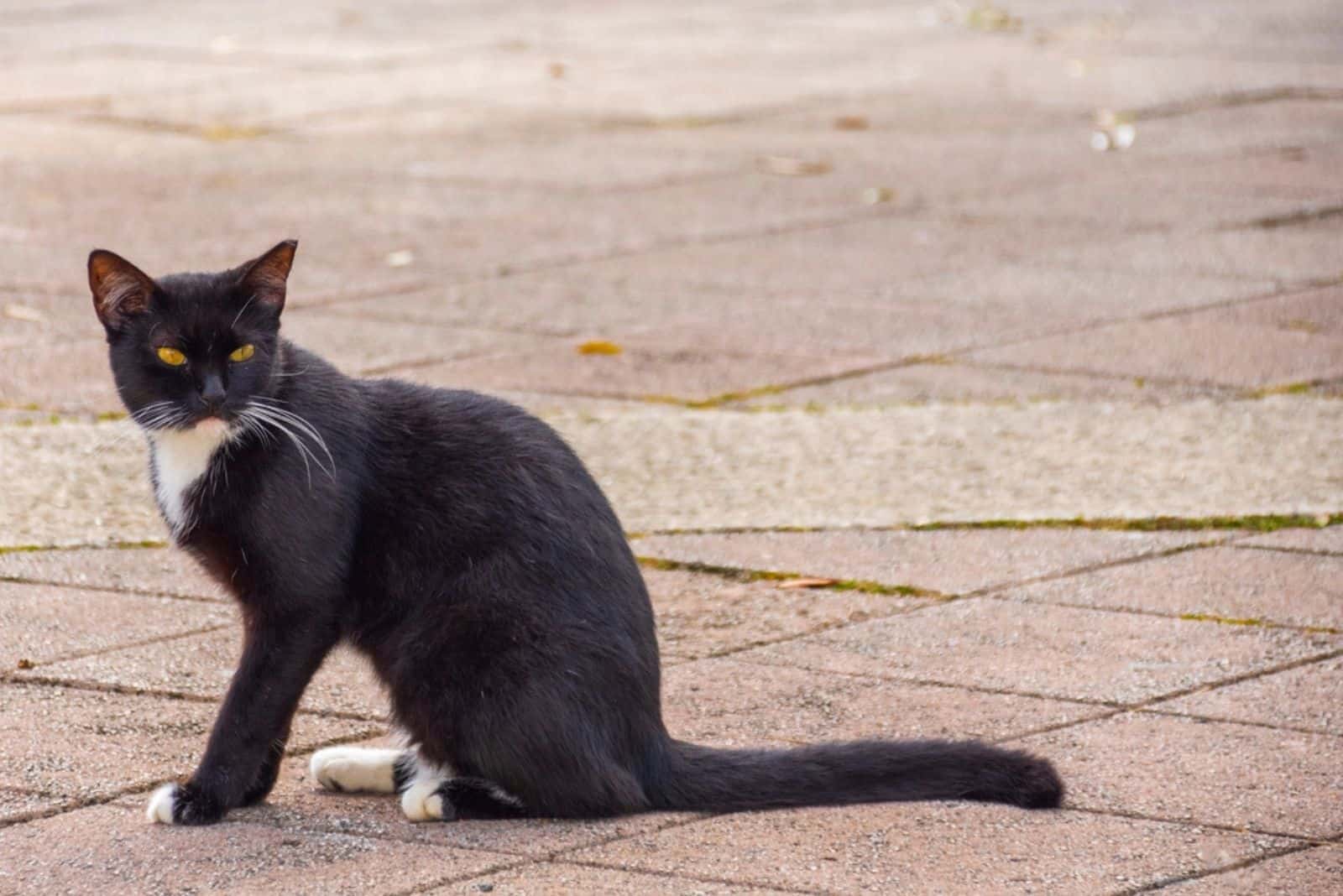
Cats change as they age; their playfulness, personality, and health (including their metabolism and weight) can all change.
Seeing your cat every day might make it challenging to detect weight loss because many elderly cats lose weight gradually.
It’s reported that 15% of cats over 12 have low body conditions, which means they are underweight or lack sufficient muscle.
Cats need more food after the age of 11 merely to keep their resting body weight constant. This may lead to weight loss, especially if your cat isn’t eating properly due to a medical issue.
It is important to look into any weight loss in older cats, especially if it coexists with other issues like vomiting or decreased appetite.
Again, you should mention even a slight weight loss to your veterinarian because cats often conceal sickness until they are unwell.
2. Parasitic Infection
Unfortunately, parasitism is very common in cats, and cats can get several kinds of internal and external parasites.
Cats’ bodies are invaded by internal parasites, which settle on one of the internal organs. An external parasite rests on a cat’s skin and fur, whereas an internal parasite might reside in the cat’s heart, lungs, liver, intestine, or stomach.
The parasites might be:
• single-celled (like Giardia or Toxoplasma)
• wormlike (like roundworms, hookworms, or tapeworms).
A dull coat, coughing, vomiting, diarrhea, mucoid or bloody stools, loss of appetite, weight loss, pale mucous membranes, or a pot-bellied look are just a few symptoms of parasite infestations.
Weakened cats are more prone to viral and bacterial infections, potentially leading to more medical issues. Additionally, certain parasites can infect people.
If you suspect your cat’s weight loss has arisen due to a parasitic infection, you should see a vet!
The medicine given by your veterinarian may need to be taken in one or more doses to treat the condition. Following your veterinarian’s instructions very closely is key to efficient treatment.
3. An Underlying Medical Condition
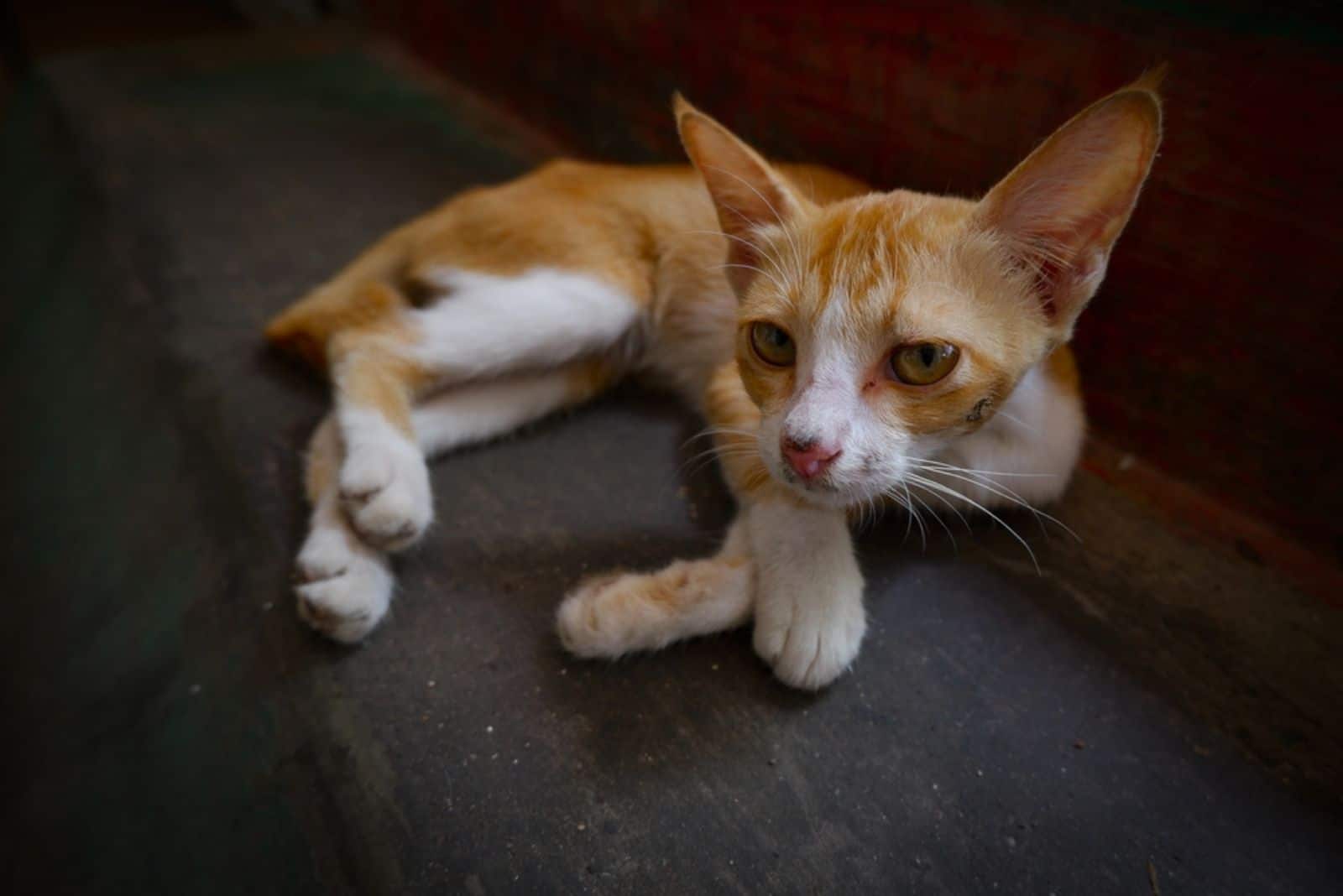
There are many potential causes of weight loss, and more often than not, an underlying health issue is causing the cat to become underweight.
Let’s go over the most common health issue with the symptom of weight loss.
Esophagitis
Esophagitis is an inflammation of the esophagus (the tube through which food travels from the mouth to the stomach).
Symptoms are regurgitation, drooling, difficulty swallowing, loss of appetite, and subsequent weight loss.
Inflammatory Bowel Disease (IBD)
Inflammatory bowel disease is a term describing a group of gastrointestinal diseases: inflammation of the stomach, small intestines, and/or large intestines. The cause of IBD is unknown.
Cats with IBD typically experience chronic symptoms that worsen with time (daily, weekly, or monthly). One of the most prominent symptoms of feline IBD is weight loss.
Hyperthyroidism
When the thyroid gland produces too much thyroid hormone, hyperthyroidism results, and this issue is also known as an overactive thyroid.
This health issue accelerates the body’s metabolism, and many symptoms may result from it, including weight loss and an erratic or fast heartbeat.
Even though cats have an increased appetite, weight loss is present, and it’s the most typical indication of hyperthyroidism in cats.
Pancreatitis
Pancreatitis is inflammation of the pancreas, usually accompanied by inflammation of the liver and intestine. The symptoms of pancreatitis are nausea, vomiting, fever, loss of appetite, weight loss, and abdominal pain.
Early detection and rapid medical treatment are essential for the effective management of pancreatitis and for ensuring the cat’s well-being.
Kidney Disease
Kidney disease in cats arises when the kidneys stop performing their function, leading to waste buildup (as you know, the kidney’s job is to filter out waste from the blood).
Kidney disease can be acute and chronic, but both types share similar symptoms, such as increased thirst and urination, vomiting, dehydration, decreased appetite, weight loss, fever, etc.
Medication, dietary changes, and adequate hydration are the primary management tools for kidney illness.
Diabetes
When it comes to diabetes, pet owners will see that their feline companions are eating, and occasionally even more than they typically do, yet they are nevertheless losing weight.
If you’ve observed that your cat has a ravenous hunger but is still dropping pounds, visit the vet as soon as possible as feline diabetes can be a life-threatening illness.
4. Feline Dental Disease
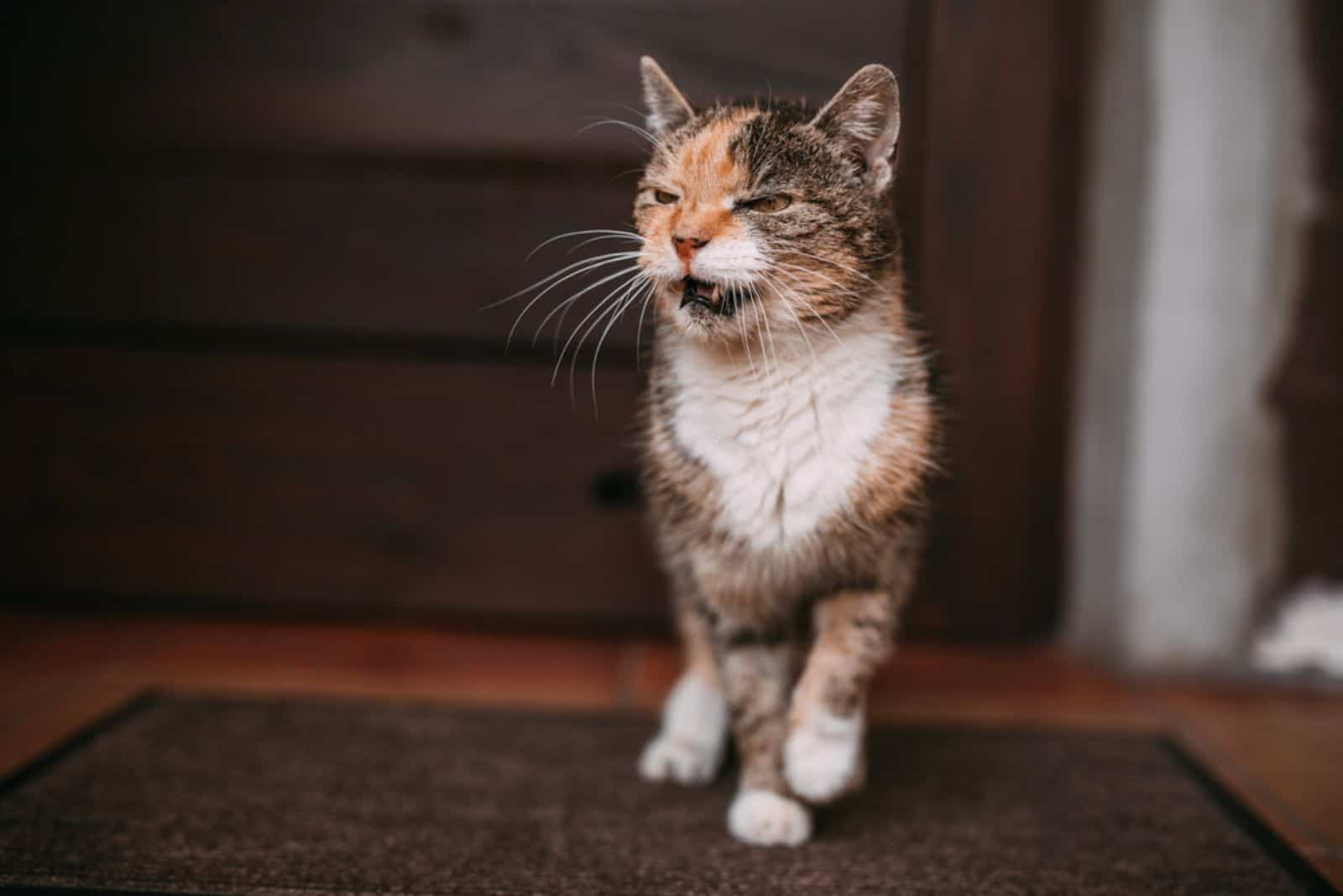
In cats, gum and tooth problems are rather typical. According to studies, 50 to 90% of cats older than four have some kind of dental illness.
Cats with dental illnesses can experience excruciating pain, lowering their quality of life. When a cat’s mouth hurts, no matter the cause, it won’t want to eat.
A cat with dental illness frequently stops eating, resulting in several health issues, one of them being weight loss.
The most common feline dental diseases are:
• stomatitis (inflammation of the mouth)
• gingivitis (inflammation of gums)
• periodontitis (a severe inflammation of gums)
• tooth resorption (a condition where the cat’s tooth structure breaks down)
Take your cat to your family veterinarian for a thorough oral examination if you see any symptoms of tartar buildup, gingivitis, or mouth pain or discomfort in your cat.
Your veterinarian will advise you on the best course of action, which may entail having your cat’s teeth checked, expertly cleaned, and radiographed while under general anesthetic.
Related: How To Deal With Cat Teeth Tartar And Other Dental Diseases
5. Stress And Anxiety
Cats can be stressed and anxious. Causes of stress and anxiety in cats include illness or painful physical conditions, traumatic experiences, improper socialization as a kitten, separation anxiety, loss of territory (due to moving homes, for example), etc.
Signs your cat is stressed or anxious are:
• restlessness
• hiding
• loss of appetite (anorexia)
• excessive meowing
• excessive salivation
• excessive grooming
A complete history of your cat’s symptoms and medical problems (if any) is necessary for making a diagnosis.
If the vet cannot establish a medical reason for your cat’s stress and anxiety, a history of your cat’s symptoms (such as when they tend to occur) will offer hints to the circumstances that trigger it.
Therefore, if your cat’s weight loss is a consequence of stress and anxiety, the best way to help your cat regain weight is to remove the cause of stress and anxiety, and your vet will help you do so.
6. Food Allergies
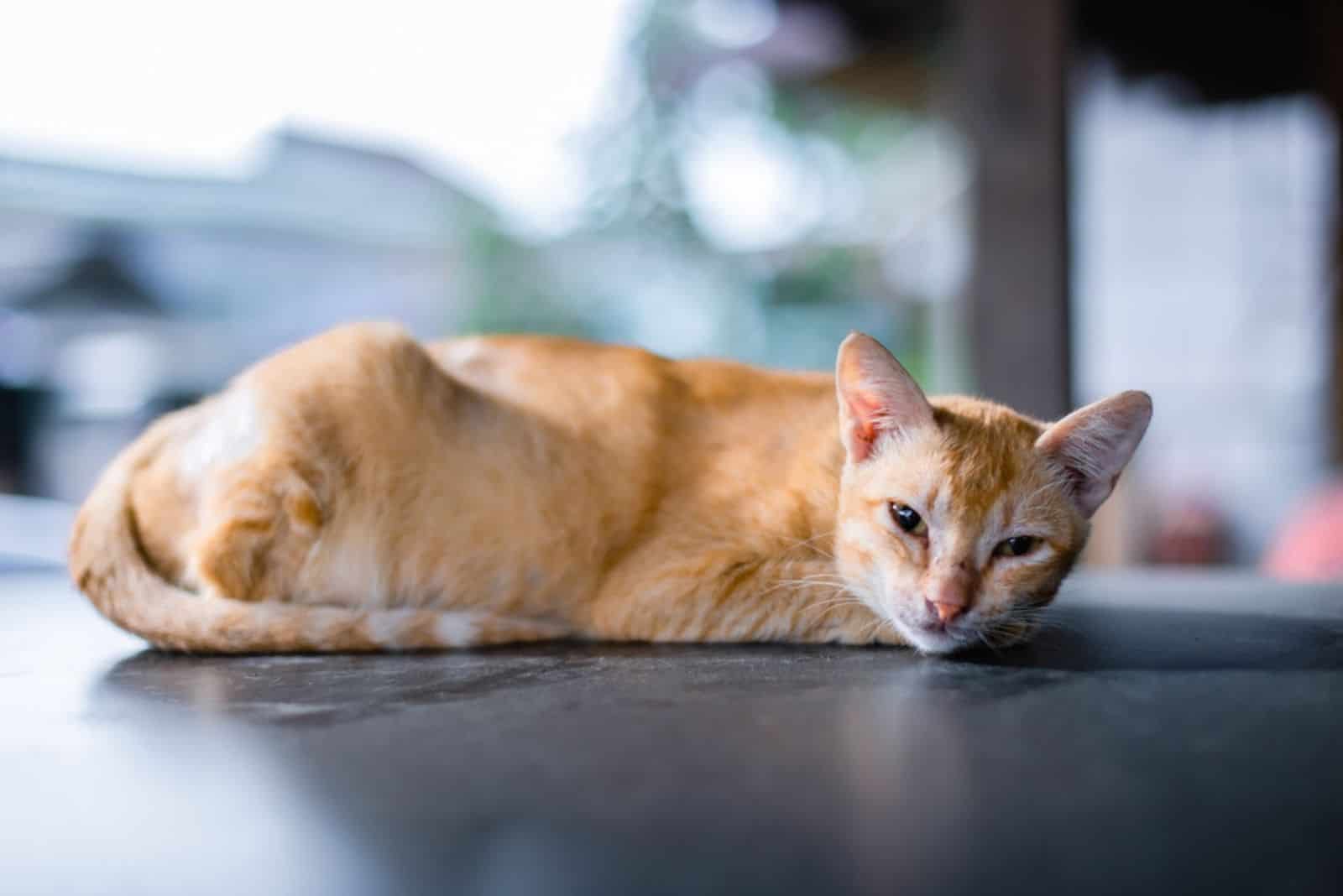
Food allergies or intolerances occur when the immune system overreacts to a particular food item (usually a protein) after consumption.
It is unknown why a meal that has been ingested for a while might become an allergy.
The third most frequent allergy in cats is related to food.
Symptoms of cat food allergies are:
• Itchy skin
• Loss of appetite, which leads to weight loss
• Vomiting
• Diarrhea
• Dull coat
The persistence of symptoms over the whole year is one of the main signs that a food allergy is present.
Implementing a “novel diet,” which employs the process of elimination to identify the allergen, is the best technique to diagnose a food allergy.
The cat will be put on a rigorous diet and continue eating this straightforward diet for eight to ten weeks or until all allergy symptoms have disappeared.
One new food item could then be offered at that stage. It is acceptable to infer that food is not the allergen if there are no symptoms in the following two weeks. If symptoms do appear, the allergen has been identified.
Why Does My Cat Feel Bony All Of A Sudden?
If you observe any dramatic changes in your cat’s weight or look, you should take them to the doctor.
Typically, a cat’s protruding bones indicate that the animal has lost a lot of weight, which is not normal. Although a cat will experience weight loss as they age, it should occur gradually rather than suddenly.
You should keep a close eye on your cat’s weight and behavior, but if your cat’s weight loss is sudden, it’s best to visit a vet.
Is It Bad For A Cat To Be Skinny?
A healthy cat’s weight is heavily dependent on the cat’s breed. Some cats are naturally skinny, while others are a bit heavier.
[table id=321 /]
However, no matter the cat’s breed, weight loss and being underweight is never healthy for a cat, and it’s usually indicative of an underlying health issue the cat’s battling.
If you notice your cat losing weight and don’t know what might be causing it, please go see a veterinarian.
Some medical issues (with the symptom of weight loss) can be life-threatening, so visiting the vet is the best thing you can do as a pet parent.
What Should I Do If My Cat’s Underweight?

Regardless of the cause of the decrease in food intake, changes in eating habits and patterns need to be closely investigated.
If your cat’s weight loss is not drastic and your cat’s not showing any other symptoms of ill health, then you should help your cat gain weight at home. I will talk a bit more about this in the next section.
However, if your cat’s feeding habits alter dramatically and the weight loss is noticeable, consult your veterinarian immediately.
Help Your Cat Gain Weight
If you notice your cat has lost some weight recently but is showing no other signs of health issues, then you can try making your cat eat more using some of the following tips.
Of course, you can only try them if your cat’s weight loss is not drastic and you don’t suspect your cat to be battling a more serious health issue. In that case, feel free to try any (or all) of these tips!
1. Switch Up Your Cat’s Food
Your cat could become tired of eating the same food every day. Therefore, you can improve your cat’s appetite by presenting some new flavors and textures.
Don’t stop feeding your cat its kibble just yet; switching to a new brand should be gradual and consistent.
If their food changes abruptly, cats are susceptible to stomach problems, so it takes a few days to gradually acclimatize your cat to a new food brand.
When switching your cat’s wet food, combine part of their previous dry food with the new one.
Suggested: How Much Wet Food To Feed A Cat Per Day? Let’s Find Out
Be cautious while switching the brand of food you feed your cat. It’s possible your cat likes the flavor of the new food, but the cat’s stomach doesn’t.
It’s also possible the cat does not like the new food from another cat food brand. Learning the preferred foods for your cat may need some effort.
You can also look into homemade high-calorie cat food recipes to aid your cat’s weight gain!
2. Heat Your Cat’s Food
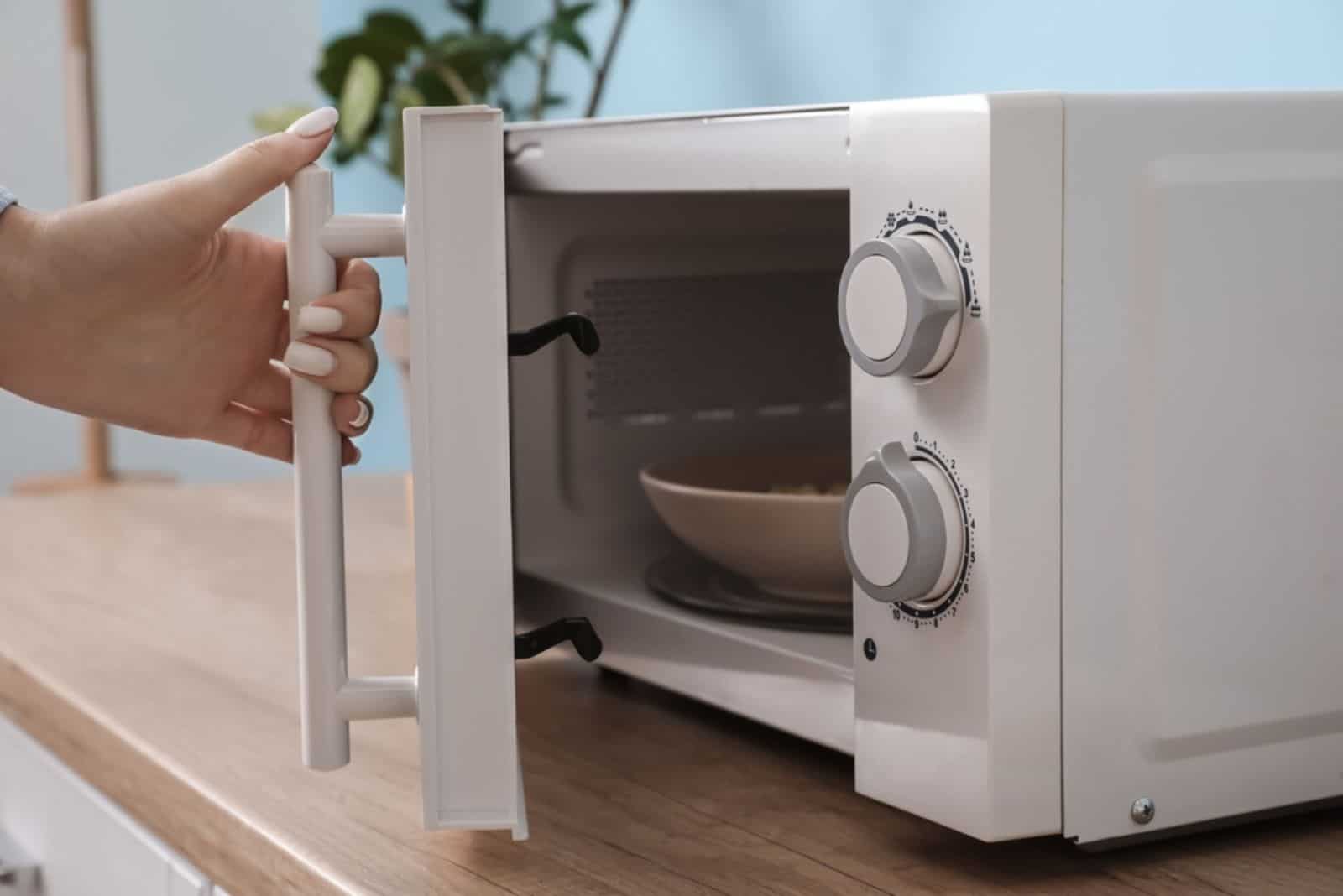
For the best freshness, a variety of wet cat meals must be kept in the refrigerator. However, the food is frequently unpleasant texturally and flavor-wise when it is so cold.
Owing to a cat’s natural tendency to seek out warm-blooded prey, providing it cold is likely to result in your cat not eating anything.
It’s okay to warm up or heat wet cat food, and it is recommended to allow the wet food to cool to room temperature after heating it.
Warming up restores the food’s consistency to normal, releases its scent, and increases your cat’s desire to eat it. Even if you don’t enjoy the fragrance, the cat does.
Additionally, boiling the food for your cat might aid in killing any harmful bacteria lodged in it.
3. Use Cat Gravy
Cat gravy is one of the many ways you can liven up your cat’s bland diet.
In its purest form, gravy is just fat or cooking oil combined with some broth and the liquids that fish, meat, and seafood produce while cooking.
Cat food pouches or canned food frequently contain cat gravy, and if you’ve ever given your cat lunch and watched as they licked the gravy completely off the meal without touching the rest, you know how delicious it tastes to cats.
You can buy cat gravy at a pet shop, or you can make homemade cat gravy!
In addition to enhancing flavor, gravy can provide your cat with an additional source of hydration and improve the texture of dry and wet food.
4. Ensure Your Cat Has Its Own Food Bowl

Get your cat its own food bowl if you’re in a multi-cat home. Your cat might not be able to receive enough food if you have other cats, especially if the other cats tend to dominate her.
If this occurs, you might need to establish clear guidelines about which bowl each cat must use at mealtimes.
Cats need to realize that they don’t have to battle each other for food or possessions. As a result, be sure that each of your cats has its belongings, including a food bowl.
Important Note: If Nothing Works, Go To The Vet
If you’ve tried everything you can to make your kitty regain its appetite and it’s not working, you should visit a vet.
Your cat might be battling a more serious health issue but hiding it, as many cats do (it’s their instinct to hide signs of weakness).
Wrapping Up
My cat is so skinny I can feel her bones; what should I do? After reading this article, I’m sure you’ll know what to do, but let’s review the most important points again!
If you can feel your cat’s bones while petting her, but you don’t see the bones sticking out, that’s perfectly normal.
However, if you can easily feel your cat’s bones and they’re visually observable and sticking out, that’s a sign your cat is underweight.
Remember, weight is one of the most important indicators of your kitty’s health, so drastic weight loss is out of the ordinary.
You should see a vet if you’re worried about your cat’s weight. They will know precisely how to help your kitty!
Related Articles:
Why My Cat Wont Eat Wet Food? All There Is To Know!
What Do Cats Like To Eat For Breakfast? Plus 3 Yummy Ideas!
How Long Does It Take A Cat To Digest Food? All You Need To Know


